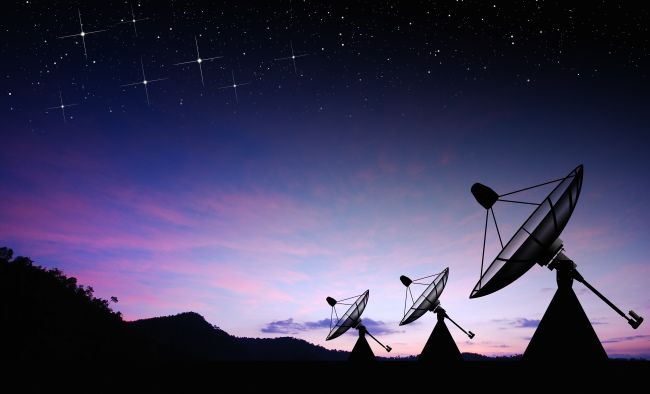Quick Links
Satellite internet is known for being slow and expensive. Traditionally, it was used by people in remote rural areas and at sea. Let's take a look at the problems associated with satellite internet---as well as how several players, like Elon Musk's Starlink, are working on solving its problems.
What Is Satellite Internet?
There are a few differences between regular, terrestrial internet and satellite internet access. The first is the route that information travels: In most cases, when you want to access a website, your laptop or phone sends a message to your router. Your router then sends a request to your internet service provider's server, which in turn connects to the server of the website that you want.
That connection runs mostly over subterranean and suboceanic cables, except perhaps for the first part of the connection: Most people use Wi-Fi at home, especially on phones and laptops. These cables can usually handle immense amounts of information very quickly, meaning that you can stream Netflix or download large files without any real issues. (Of course, your mileage may vary depending on where you live.)
With satellites, however, there are some extra steps---it's not like we can hook a cable up to them! When you're connected via satellite, you usually need to set up a dish and a modem (remember those?) in your home. When you're connecting to a website, your request is first sent via the modem to the dish, which beams it to the satellite.
The satellite, in turn, sends your request to the network operations center, or NOC, of your satellite internet provider. The NOC sends the request to the website's server in the usual way and then sends that result back to the satellite, which beams it back down to you via your dish and modem.
What Are the Problems with Satellite Internet?
Because you need so much more extra equipment to use satellite internet---both a modem and a dish as opposed to just one router---the setup costs for satellite internet are generally higher than for regular internet.
On top of that, it's also more expensive, because satellites aren't exactly cheap: Not only are they high-tech machines in and of themselves, but also, the cost of sending them into space and maintaining them while they're up there is prohibitive. Altogether, this makes satellite a lot more expensive than regular, terrestrial internet.
It's not just price that makes satellite internet unattractive, though: There are also issues with speed. Not only does a satellite have less data throughput (as this reply in a Reddit thread explains in detail), but also, the distance between a satellite and the earth is big enough to cause noticeable delays.
Most satellite internet uses satellites that are in geostationary---or geosynchronous---orbit, right over the equator. The advantage of this type of orbit is that it stays in the same place relative to the earth at all times: If a satellite is hanging over Africa in geostationary orbit, it stays there. The advantage is that you can rely on it always being there, meaning that you can rely on your internet.
The downside is that geostationary orbits are high up: They're roughly 35,000 km, or 22,000 miles from the Earth's surface, which is just a little less than the total circumference of the planet. Because your data has so far to travel, it slows down, much like what happens if you connect to a VPN on the other side of the world.
Another huge issue is latency, or how long it takes for data to travel from one point to another. Satellite connections usually have terrible latency due to being so far removed from us.
Who Uses Satellite Internet, and Who Provides It?
With the higher cost and decreased speed in mind, satellite internet is generally only used by people who can't have a cabled connection, or who can't have Wi-Fi beamed to them. As such, it's used a lot on ships far out from shore, on airplanes, and by people living in remote rural areas like West Texas. In other words, we're talking about places that don't have any cables at all, or places where the other choice is dial-up. Dial-up is pretty much the only internet connection that's worse than satellite.
Because the market is pretty small, there are only a few providers. Two of the biggest names in the industry are Viasat and HughesNet, which operate mainly in the United States, although there are plenty of smaller companies both in the U.S. and worldwide. However, a massive shakeup is coming in the form of Starlink, a subsidiary of Elon Musk's commercial spaceflight company SpaceX.
Starlink promises higher speeds and lower latency by deploying a network of small satellites in low-earth orbit, or roughly 1,000 km or so above the surface of the Earth (It depends on where you are on the globe.). Compare this to the 35,000 km of geostationary satellites, and you can probably already guess the kinds of improvements that we'll see in both speed and ping.
The downside to using LEO is that Starlink will have to move around its network of satellites to make sure that there's enough coverage. How this will affect users remains to be seen. So far, however, people seem pretty happy with using Starlink, praising its speed and low ping---concerns from astronomers notwithstanding.
Whether or not Starlink will be a market disruptor remains to be seen.
But one thing is for certain: As long as not everyone in the world is linked up to cable, satellite internet isn't going anywhere.


